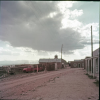long-barreled pistol
A single-action pistol whose barrel measures 10 inches or longer. Because the barrel of this pistol far exceeds the normal pistol barrel length of four inches, the velocity of bullets fired from long barrel pistols is lower than from short barrel pistols. This is because gas generated during the percussive explosion needed to expel the projectile from the barrel works as a frictive agent, competing with the projectile to exit the barrel. Therefore, the longer the barrel, the slower the velocity of the shot fired due to the increase in friction that results from the increase in barrel length. Colt Manufacturing Company desgined and manufactured eighteen different models of long barrel pistols. Today, these kinds of gun are more for show than for actual use.
The long barrel pistol is also wrapped in mystery. The exemplar of the long barrel pistol is the Buntline Model or Buntline Special, a 12-inch-long pistol famous for being the weapon of the legendary Deputy Town Marshal of Tombstone, Arizona, Wyatt Earp. As the legend goes, a Western literary novelist, Edward Judson, purchased five long barrel pistols at the 1878 St. Louis Exposition and gave them to five lawmen destined for fame or infamy, depending on the story being told. Wyatt Earp, Neal Brown, Charlie Basset, Bill Tilghman, and Bat Masterson were the rumored recipients of these pistols. Because Judson purchased the weapons under a pseudonym, Ned Buntline, they later acquired the name Buntline Model or Buntline Special. While this legend is a nice tale, there is no evidence that it is true.








